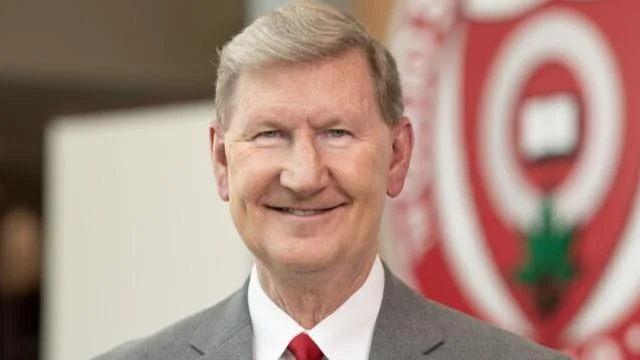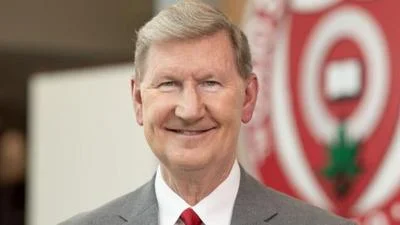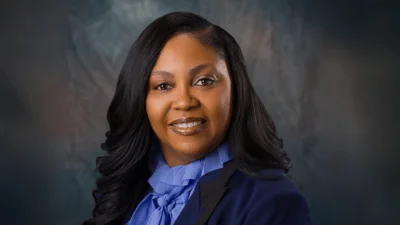Walter “Ted” Carter Jr. President at Ohio State University | Official website
Walter “Ted” Carter Jr. President at Ohio State University | Official website
As part of the America Walks’ Week Without Driving initiative, the Age-Friendly Innovation Center (AFIC) brought its Autumn 2025 Scholars Cohort and members of the AFIC resident council to the Central Ohio Transit Authority (COTA) for a travel training session.
The national event, held from September 29 to October 5, aims to raise awareness about transportation barriers faced by people who do not drive. According to organizers, nearly one-third of Americans do not drive.
Transportation is a major focus for AFIC’s research and community engagement. By participating in Week Without Driving, AFIC seeks to highlight how limited transportation options affect daily life and emphasize the need for communities that support residents of all ages and abilities.
“A Week Without Driving is all about finding ways to get around without your car and paying attention to where transportation options fall short,” said Phoebe Allebach, AFIC’s community engagement coordinator. “We’re kicking off the week by learning about what local transportation resources we have in Columbus, starting with the most robust: COTA.”
During the event, attendees met with John W. Barrett, a COTA travel trainer. He explained how to navigate the bus system—from choosing routes and waiting at stops to paying fares.
Pam Shields, founder of the Urban Aging Residents Coalition (UARC), attended the training. She started UARC in 2020 during the COVID-19 pandemic as a way to address isolation among older adults.
“As seniors, we know two things for certain,” she said. “You cannot isolate. And if we don’t have socialization, we will die.”
Shields stressed that reliable transportation is key for staying connected when driving is no longer possible due to health or financial reasons. She and fellow UARC member Ann Valentine aim to share information about available resources with other older adults through monthly meetings that provide support and guidance.
“There’s so much information out there,” Valentine said. “We go out into the community. We bring pamphlets to give to other seniors. We’re talking to our peers, saying, ‘You really need to know about this. You need to know what’s going on.’”
Sam Smith from the Mid-Ohio Regional Planning Commission (MORPC), who also serves as mobility manager for Franklin County, provided details on public transit options beyond Columbus.
“There can be coordination that needs to happen to meet a person’s transportation needs,” Smith said. “Oftentimes it’s piecing together various options.”
Smith led an exercise encouraging participants to consider their travel needs for essential destinations like work or medical appointments and discussed factors such as weather or injury that might impact their ability to get around.
The session concluded at COTA’s Mobility Assessment Center—a facility designed as a model bus stop with features like a half-size bus, crosswalks, shelter areas, varied terrain surfaces, ambient noise simulations, and video displays mimicking street traffic inside buses.
“It is incredibly special that COTA has invested in the Assessment Center, which is a stand-out across the country,” said Marisa Sheldon, director of AFIC. “We’re lucky to have this here and it is a reflection of COTAs commitment to ensuring the systems works well for all riders.”
Social work graduate student Maggie Morrison valued hearing from older adults at the event.
“The most important voices to account for in conversations about accessibility are aging voices,” Morrison said. “I want to listen to them so I can know how best to help them.”
She added: “I’m in the Age-Friendly Scholar program. I want to learn how to most effectively work with older adults. Learning what they need when it comes to mobility concerns—that is the focus of my internship.”
Shields found value in sharing resources among participants.
“Kudos to all of you,” she told organizers at the close of training. “This feels like an octopus—all these arms are out here with resources and services. The more you tell people, the easier it is for a lot of us to use them.”





 Alerts Sign-up
Alerts Sign-up